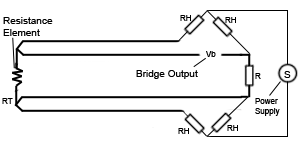i want to connect a 4 wire RTD PT100 in a wheatStone Bridge.
i tried searching on internet but only upto 3 wire configurations in bridge are available or circuits using other ADS IC's are available. but i want to do it in a Bridge Configuration. can any one suggest how i can do it?
i tried searching on internet but only upto 3 wire configurations in bridge are available or circuits using other ADS IC's are available. but i want to do it in a Bridge Configuration. can any one suggest how i can do it?

